As the newest luxury sedan in the Cadillac lineup, the all-new 2020 CT5 has been designed with a number of performance and technology features, and wrapped in a stylish fastback profile, that build on Cadillac’s award-winning legacy. (Fig. 1) Available with rear-wheel drive or all-wheel drive, the CT5 is based on the global Alpha vehicle architecture.
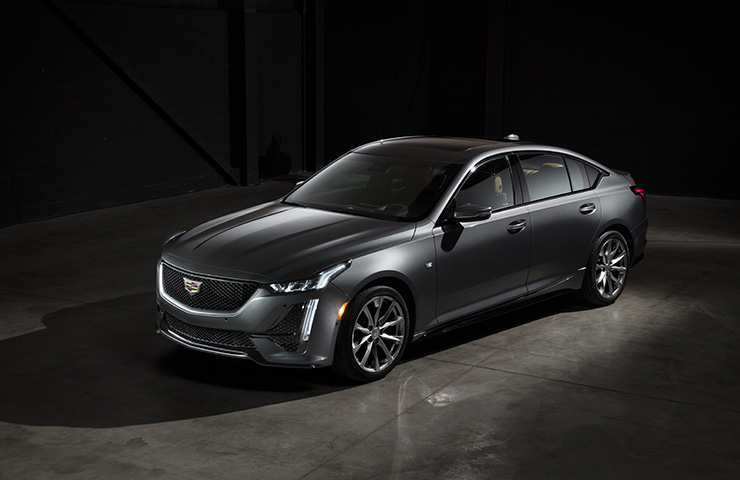 Fig. 1
Fig. 1
The CT5 is equipped with an all-new vehicle electronic system — the Next Generation Digital Vehicle Platform — capable of managing up to 4.5 terabytes of data processing power per hour. It provides more rapid communications within the vehicle itself and to outside sources due to Ethernet connections of 100Mbps, 1Gbps and 10Gbps.
Powertrain Features
At launch, the model range will include Luxury, Premium Luxury (Fig. 2) and Sport models. The 2.0L twin-scroll turbo 4-cylinder engine (RPO LSY) is standard and generates an estimated 237 horsepower and 258 lb.-ft. of torque.
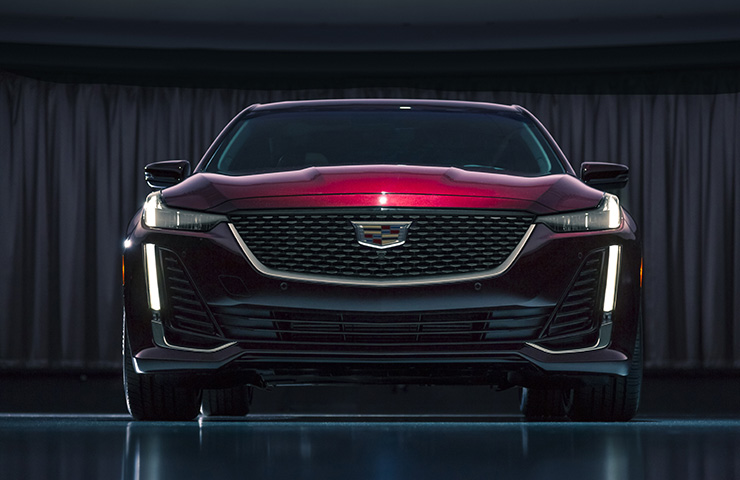 Fig. 2
Fig. 2
Later in the model year, the available 3.0L twin-turbo V6 engine (RPO LGY), which produces 360 horsepower and 405 lb.-ft. of torque, will be offered on Premium Luxury and V-Series models.
The turbocharged 2.0L DOHC, VVT 4-cylinder engine uses a twin-scroll turbocharger to help reduce turbo lag, with Active Fuel Management (AFM), Spark Ignited Direct Injection (SIDI) and Engine Stop/Start technology helping to improve fuel economy. (Fig. 3)
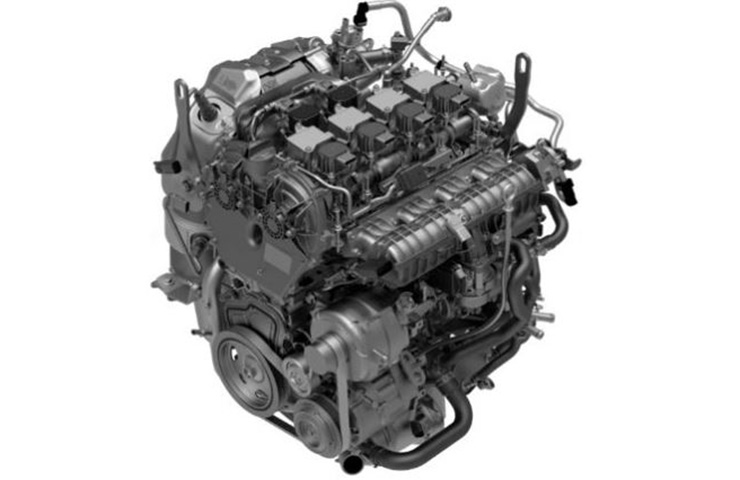 Fig. 3
Fig. 3
The 2.0L 4-cylinder engine features a Sliding Cam System (SCS) that enables the Engine Control Module (ECM) to change the camshaft lift profile of the intake and exhaust camshafts while the engine is running. The SCS uses four intake camshaft profile actuators and two exhaust camshaft profile actuators that vary the Camshaft Lift Profile Sleeve position axially on the camshaft in response to electrical commands from the ECM. Each camshaft has two profile sleeves with different height cam lobes and each camshaft has a detent ball and spring under each sleeve that helps hold the profile sleeve into position.
The SCS profile actuator solenoids push out an actuator guide pin into the shifting groove machined into the Camshaft Lift Profile Sleeve. When the guide pin engages the sleeve, it causes it to shift axially on the camshaft, causing unique-sized cam lobes to be placed over the intake and exhaust valves and modify valve lift and duration.
The cylinder block of the 2.0L engine is constructed of aluminum alloy by high-pressure die casting with four cast-in-place iron cylinder liners arranged in-line.
Within the engine block structural extension is the oil pump and the balance shafts. The balance shafts are driven by the balance chain. The oil pump assembly is driven by the balancer shaft assembly. The oil pump, which has variable flow capability to optimize oil flow to engine components as needed, uses a circular vane arrangement and the actuation of an oil control valve assembly commanded by the ECM.
The 2.0L turbocharged engine requires dexos1® approved – GEN 2 full synthetic SAE 0W-20 viscosity grade engine oil.
The fuel system is an electronic returnless on-demand design. An electric purge pump is mounted on the engine, which is designed to help comply with the most stringent emissions regulations. The electric purge pump manages the purge of vapors from the fuel tank. Compared with a traditional solenoid valve to purge emissions, the electric purge pump provides greater control over the timing and amount of purge.
Both the 4-cylinder and V6 engines are paired to the Hydra-Matic® 10L80 10-Speed automatic transmission (RPO MHS). (Fig. 4) The ten speed ratios are generated using four simple planetary gearsets, two brake clutches, and four rotating clutches. The resultant on-axis transmission architecture uses a squashed torque converter, an off-axis pump and four close-coupled gearsets.
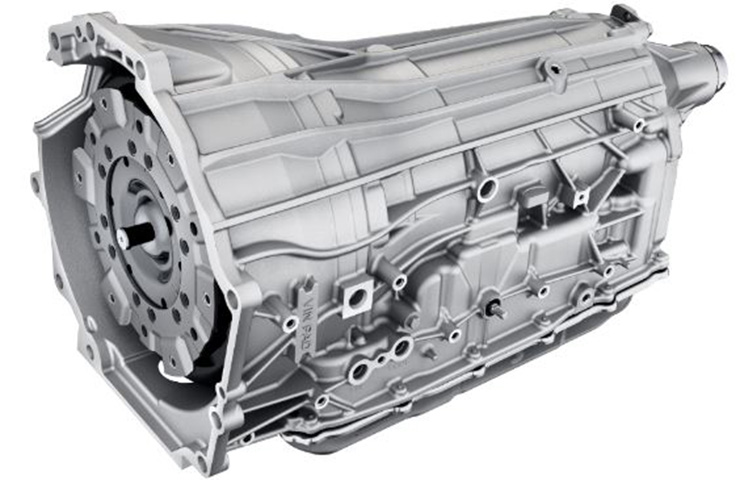 Fig. 4
Fig. 4
All-Wheel Drive
The Borg Warner™ Model BW-4475 transfer case is a 1-speed active design. The transfer case allows vehicle speed-dependent flexible clutch preload torque levels for enhanced system performance. An on-demand torque-biasing friction clutch is tuned through software calibrations.
The system has its own control module integrated with the vehicle chassis control system via the vehicle’s CAN bus. The torque split between the front and rear axle is not fixed and the system has the ability to transfer up to 100% of available torque to the front axle as needed.
Driver Mode Control
The Driver Mode Control allows the driver to personalize the driving experience by selecting one of three pre-optimized selectable Drive Modes: Tour, Sport, Snow/Ice, and My Mode. (Fig. 5) My Mode enables the configuration of vehicle sub-systems, including steering, powertrain, braking, engine sound and other tuning. The modes are selected by pressing the Drive Mode button on the center console.
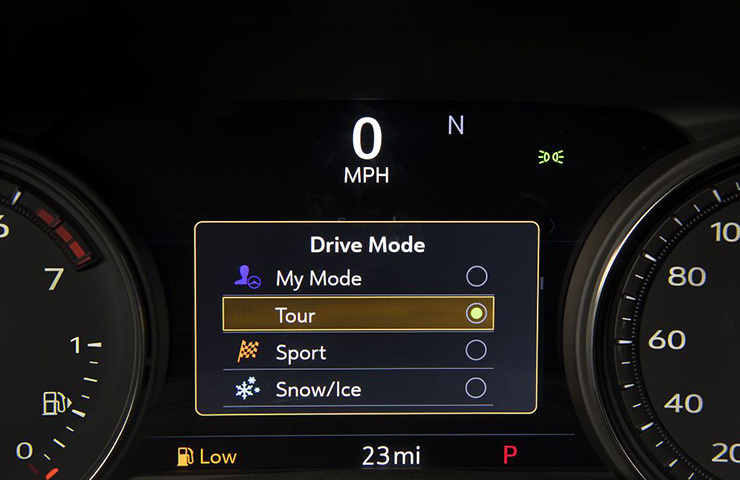 Fig. 5
Fig. 5
Chassis Features
Chassis and driving dynamics features on the new CT5 include a standard Bosch premium electric, rack-mounted power steering system, eBoost brakes, and ZF MVS passive dampers as well as Brembo brakes on Sport models. (Fig. 6)
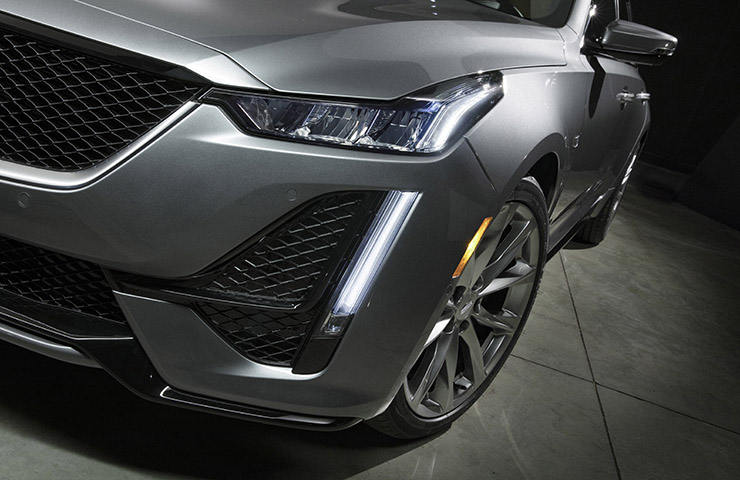 Fig. 6
Fig. 6
Depending on options, the following vehicle performance enhancement systems are provided:
- ABS
- Adaptive Cruise Control
- Bi-directional WSS
- Brake Drying/Cleaning
- Collision Imminent Braking
- Dynamic Rear Proportioning
- Electronic Stability Control
- Engine Drag Control
- Extended Hill Hold Start Assist
- Panic Brake Assist
- Teen Mode Support
- Traction Control
- Trailer Sway Control
Driveline Damping is required on vehicles with Engine Stability Control (ESC), Stop/Start functionality and an automatic transmission. It maintains brake pressure to dampen driveline acceleration disturbance as the engine is restarted and holds brake pressure to retard or prevent the vehicle from rolling. It’s used for driver comfort and also to extend vehicle hold on a steep grade.
At all four corners of the CT5 are 18-inch alloy wheels on the Luxury model, while Premium Luxury and Sport models are equipped with 19-inch wheels.
Infotainment Systems
The 1080dp high-definition full-color 10-inch-diagonal touchscreen is mounted high within the instrument panel for visibility. (Fig. 7)
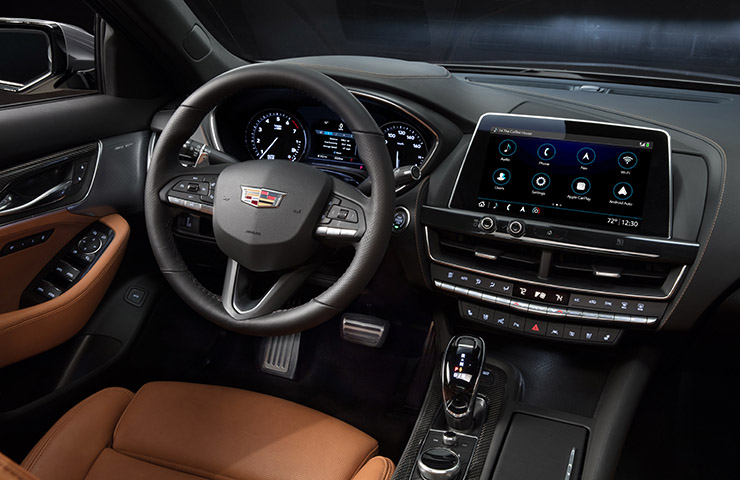 Fig.7
Fig.7
There are two available audio systems. The Premium Audio System consists of nine speakers located in the center of the instrument panel, in each door, and in the rear package shelf.
The Bose Performance Series System consists of 15 premium speakers located in the center of the instrument panel, in each A-pillar, in each door, and in the rear package shelf.
Both systems feature Engine Sound Enhancement (ESE) to accentuate natural powertrain and exhaust system sounds and deliver them to the cabin at the right levels during the correct times, such as during engine start or spirited acceleration. It uses the infotainment system microphones, tachometer input, software integrated into the Amplifier/Active Noise Cancellation Module, and the vehicle speakers to determine and generate the correct frequencies needed to modify the sound and play it back through the speakers. The engineering and science behind ESE are rooted in orders, or sound frequencies, that are generated by the engine. ESE amplifies certain orders to achieve the desired sounds. Adding more orders produces a richer, more complex and pleasing sound. Sound levels are based on engine speed as ESE activates at approximately 3,000 rpm when the engine is moving into its optimal power band and on accelerator pedal position.
Safety Features
Depending on equipment, the CT5 offers an array of standard and available safety, driver awareness and driver assistance technologies.
Driver awareness technologies include standard Safety Alert Seat (SAS) and the available Rear Camera Mirror with zoom and tilt adjustment.
Driver assistance technologies may include: Adaptive Cruise Control, Automatic Emergency Braking (AEB), Forward Collision Alert (FCA), Front Pedestrian Braking (FPB), Lane Change Alert (LCA), Lane Departure Warning (LDW), Lane Keep Assist (LKA) and Side Blind Zone Alert (SBZA).
In addition, parking or backing assistance technologies may include: Automatic Parking Assist with Braking, Backing Warning System, Front Park Assist (FPA), Rear Cross Traffic Alert (RCTA), Rear Park Assist (RPA), Rear Vision Camera (RVC), Reverse Automatic Braking (RAB) and Surround Vision.
The CT5 also is equipped with eight airbags to help protect occupants and features advanced sensing technology to help detect the type and severity of the collision that has occurred in order to ensure that the airbags inflate as quickly as needed. (Fig. 8) The sensing system includes four acceleration-based sensors at the front of the vehicle and on either side of the vehicle and two pressure-based sensors inside the front doors.
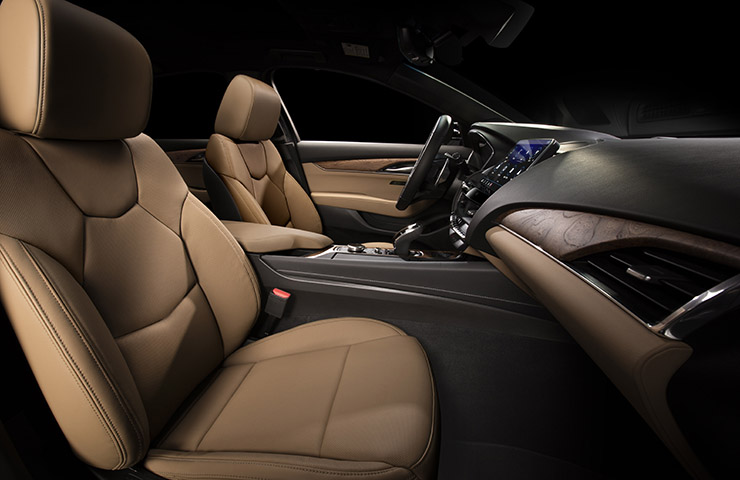 Fig. 8
Fig. 8
Hands-Free Decklid
CT5 also features an available hands-free power-release decklid. The hands-free decklid uses a motion sensor with a Cadillac crest target projection that allows owners to activate the trunk release by kicking their foot under the left side of the rear bumper. (Fig. 9)
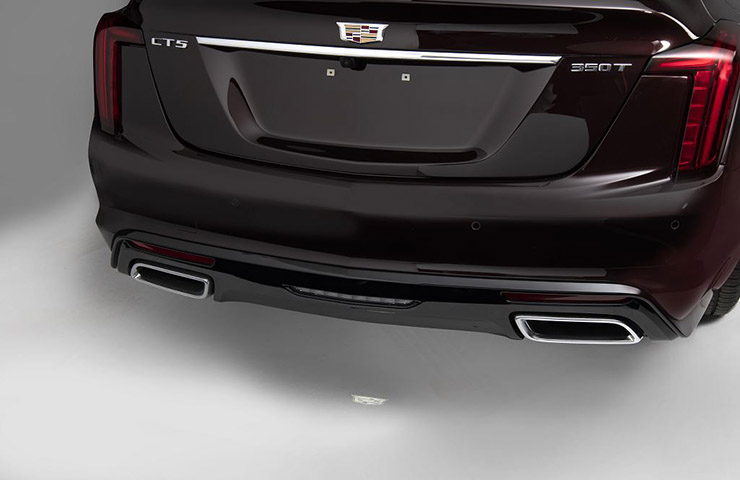 Fig. 9
Fig. 9
Flatbed Towing
A flatbed car carrier is recommended to transport a disabled vehicle. The transmission must be in Neutral when moving the vehicle. If the vehicle is equipped with a tow eye, only use the tow eye to pull the vehicle onto a flatbed car carrier from a flat road surface. Do not use the tow eye to pull the vehicle from snow, mud, or sand.
For additional information on the all-new 2020 CT5, refer to Bulletin #19-NA-247.
– Thanks to Blake Streling and Tom Renno






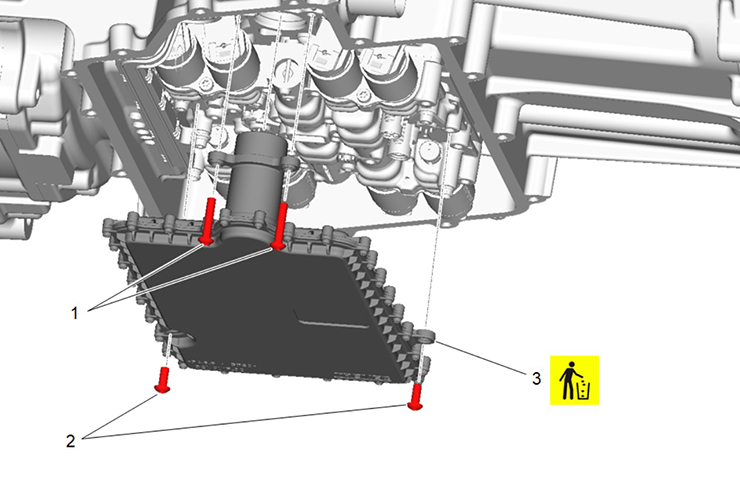

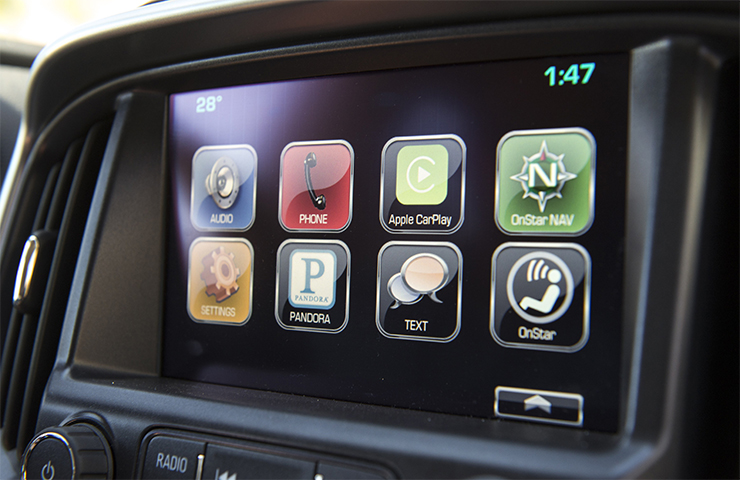
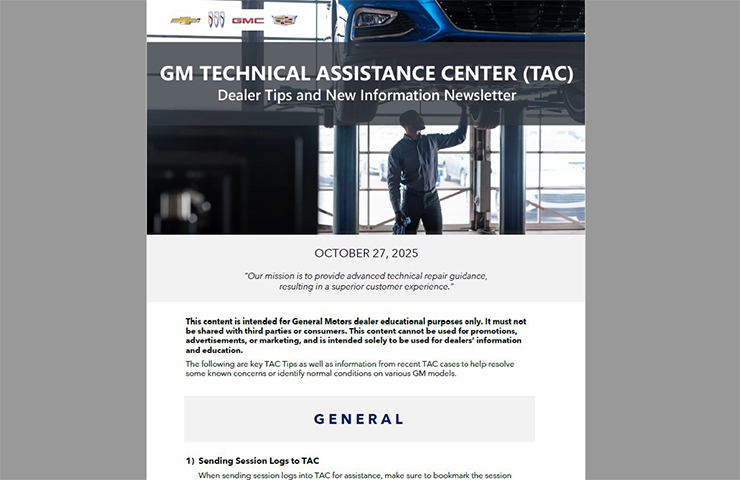
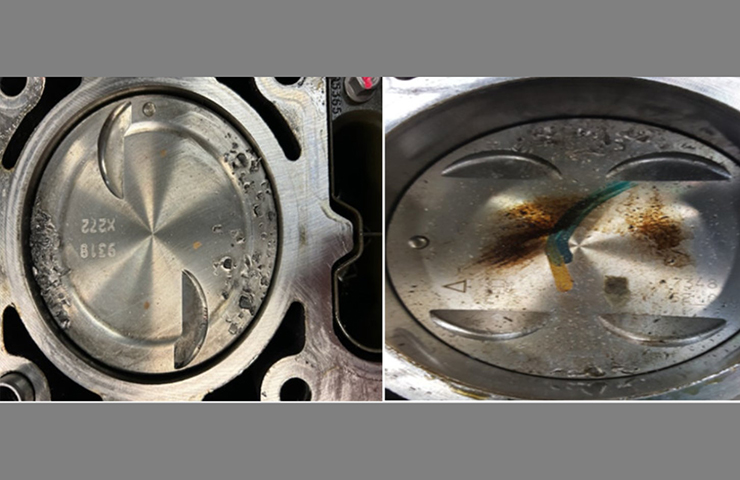


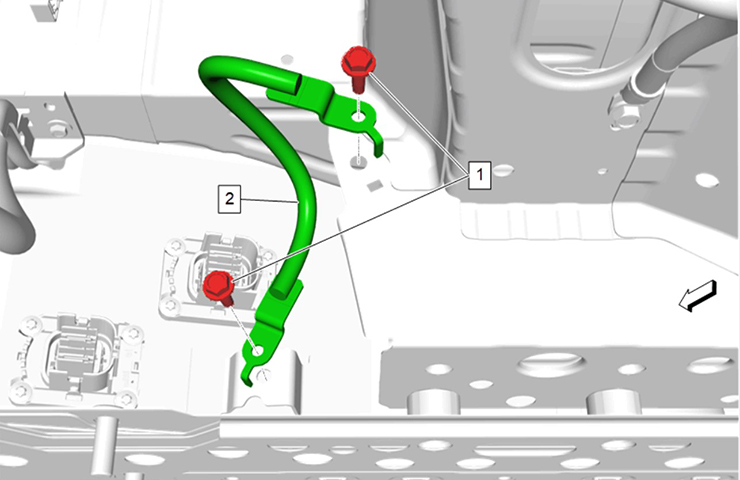
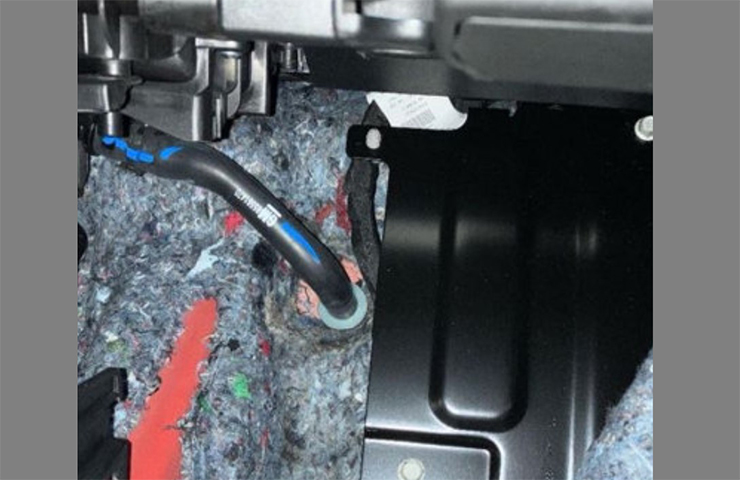










If the vehicle has an uncharged battery or a battery with low voltage (less than 9 volts), try charging or jump-starting the battery. There is a manual park release procedure that can be used to shift the vehicle into N (Neutral) when the engine is not running or the battery charge is below 9 volts. Refer to Shifting Out of Park in the Owner’s Manual.
Question, is it possible to shift to neutral with insufficient battery voltage?
Thank You, Keith Bradacs CTF